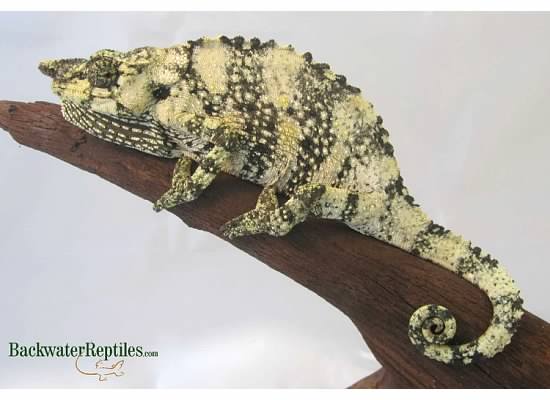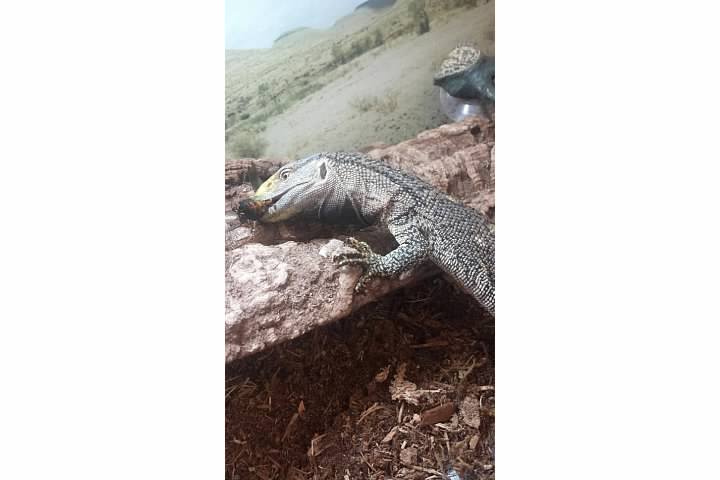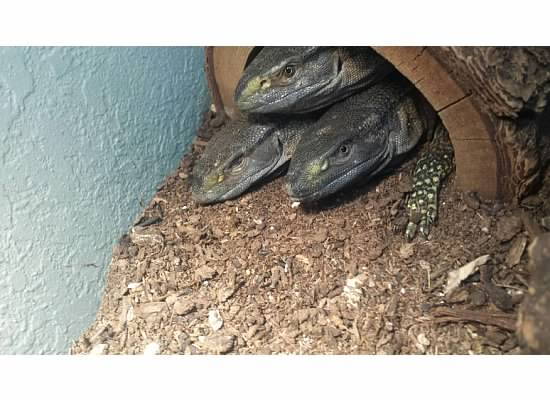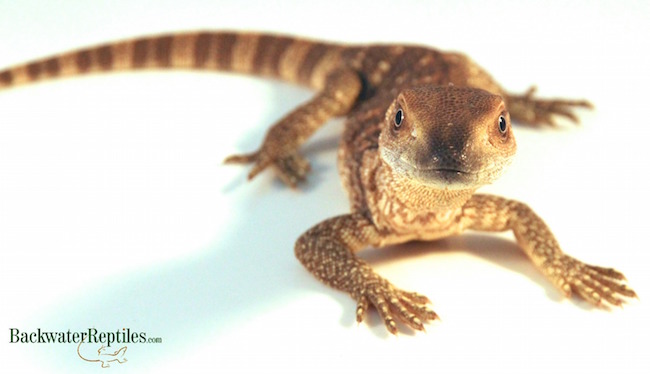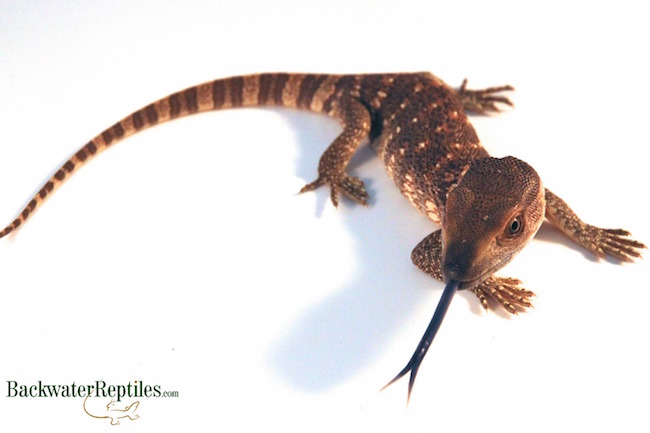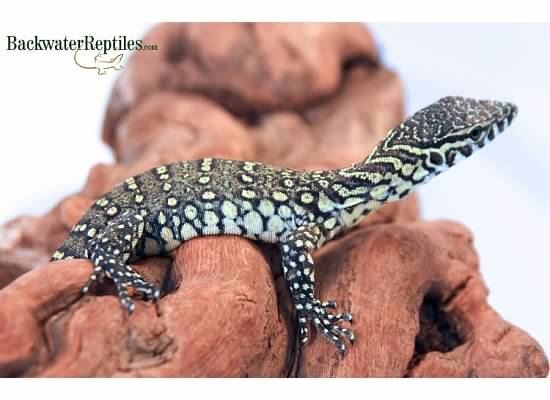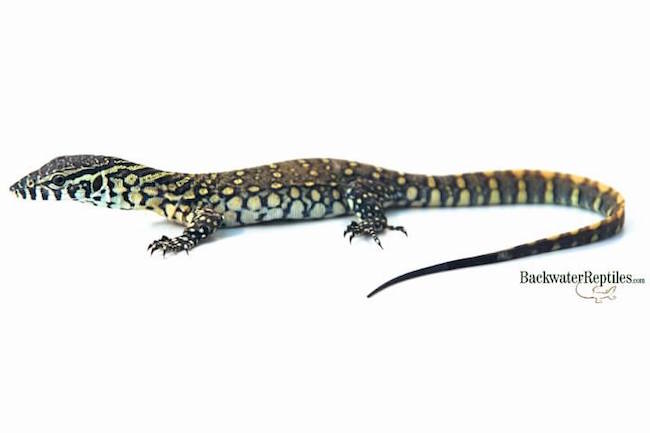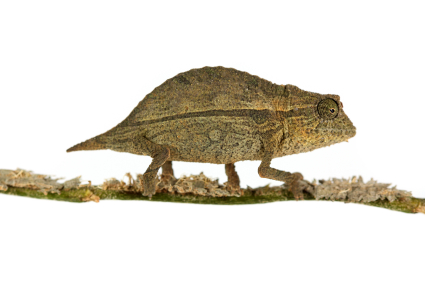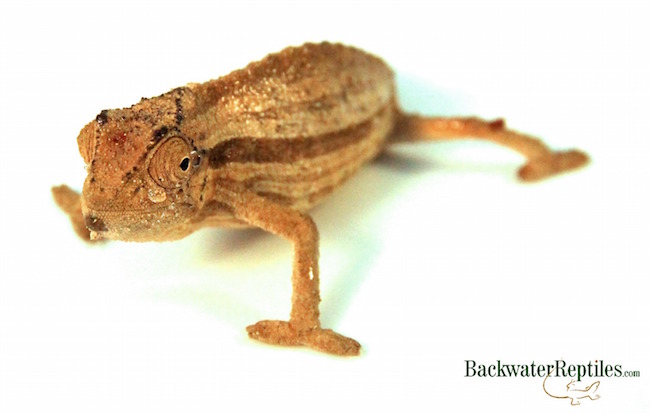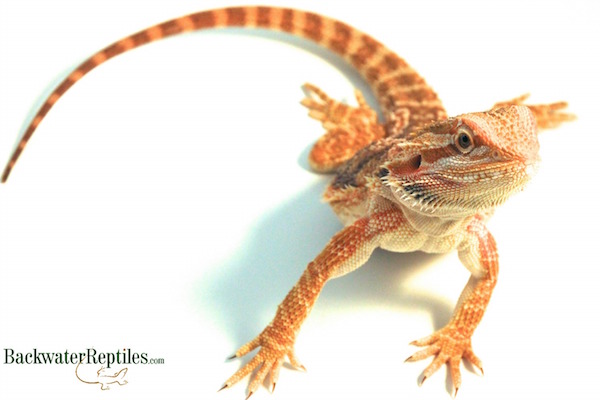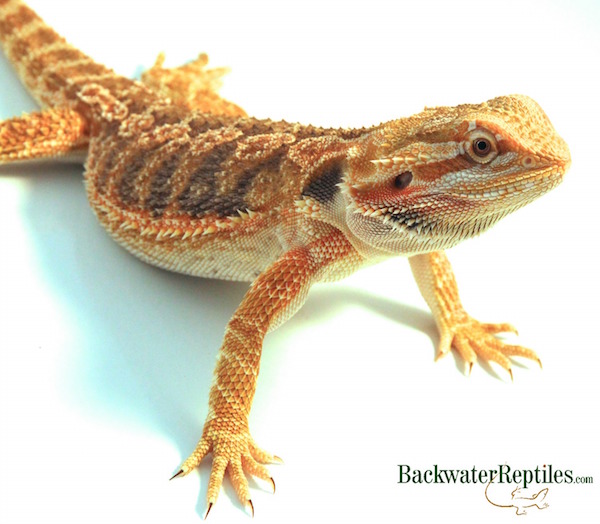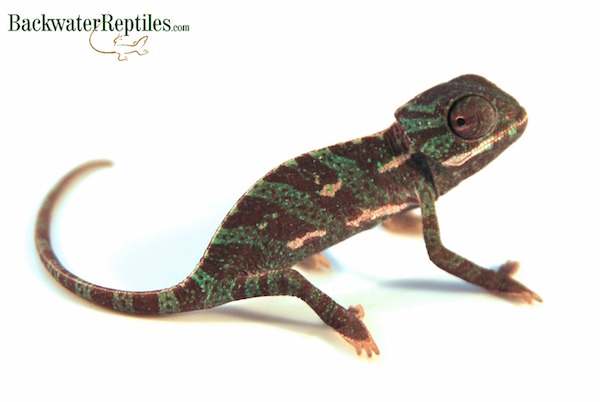Ever wondered what species of chameleon are the largest in the world? There are many types of chameleons and each kind has unique traits and quirks associated with it. We’ve talked about pygmy chameleons in a previous post, which are some of the smallest chameleons, but this entry is all about the behemoths – specifically the four largest species of chameleon.
4. Veiled Chameleon (Chamaeleo calyptratus)
Veiled Chameleons, also known as Yemen Chameleons, are becoming popular pet chameleons due to captive breeding efforts. Wild-caught animals have a reputation for having a hard time adjusting to captivity, but ones produced by breeders like us are hardier than ever and thrive in the proper captive conditions. They are number four on our list of the largest chameleons.

Male veiled chameleons can reach lengths of up to two feet with females being slightly smaller (approximately 18 inches in length). Hatchlings start off life at about three inches long, and do quite well right off the bat.
The life span of the veiled chameleon varies. Generally, males that are well cared for will live anywhere from five to eight years, whereas females will live shorter lives ranging from four to six years. This is because the process of reproducing takes a toll on the female, even if she just lays infertile egg clutches (much like a chicken).

3. Oustalet’s Chameleon (Furcifer oustaleti)
Number three on our list of the largest chameleons is the Oustalet’s. Also called the Malagasy Giant Chameleon, Oustalet’s chameleons (pronounced as “Ooh-stuh-lay”) can reach up to 27 inches long! Females are smaller and generally won’t surpass two feet in length. It’s interesting to note that although not the largest chameleon in terms of body mass, these guys are only surpassed by Parson’s chameleons in terms of length.
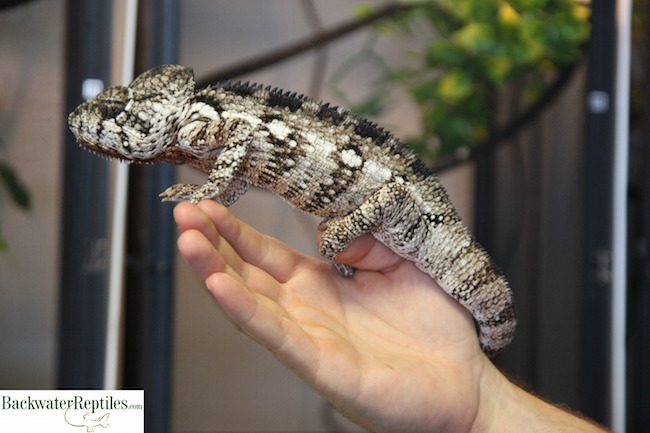
While they tend to stay in the brown color spectrum range, like all chameleons, Oustalet’s chameleons can adapt their coloration based upon moods and can exhibit blacks, rusty oranges, and sometimes even blues. Females tend to be brighter and more colorful than males. Males also have more pronounced head crests and ridge spines than the females.
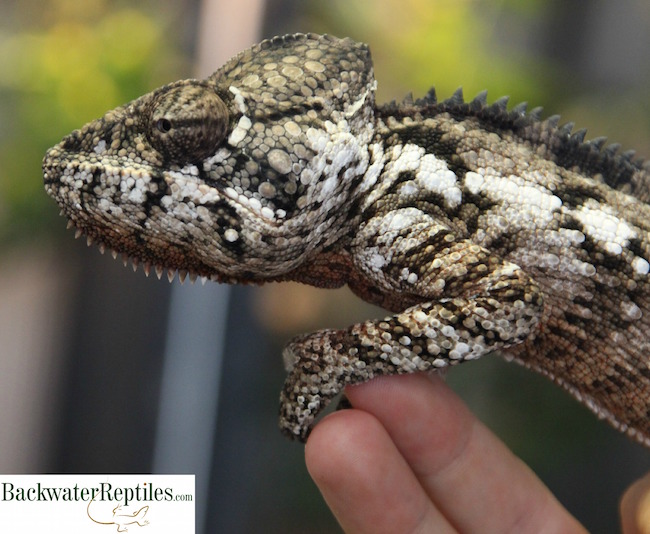
Probably due to their large size, these chameleons have voracious appetites. They will eat normal chameleon fare such as insects, but are adept hunters and will consume smaller lizards (including smaller chameleons) and even birds in the wild. The Backwater Reptiles Oustalet’s chameleons are fun to feed because they will snatch mealworms, crickets, and other large invertebrates from your hand. You’d be surprised how long their tongues are! The most aggressive feeding chameleon we have is our adult female Oustalet’s breeder (we crossed her with a Panther cham too).
2. Meller’s Chameleon (Chamaeleo melleri)
Meller’s Chameleon (AKA the “Bird-Eating Chameleon” and the “Giant One-Horned Chameleon”) is known to reach approximately two feet in length.
These chameleons are recognizable by their brilliant green, yellow, and black coloring, large occipital lobes (crest behind the ears), and single rostral horn (nose horn).
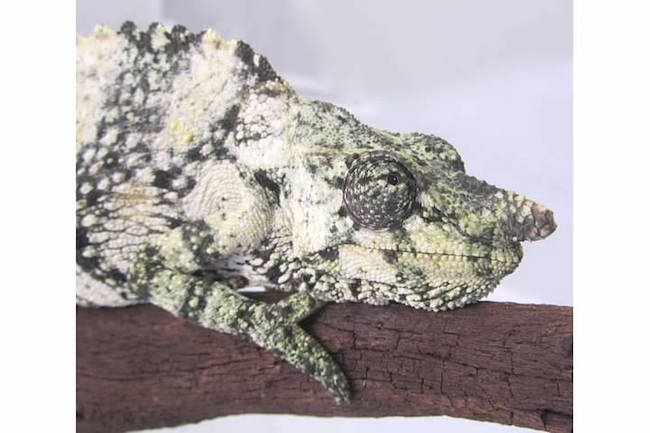
One thing to watch out for with melleri chameleons is dehydration, so watch for sunken eyes or wrinkly, saggy skin and be sure to maintain proper humidity in their environment.

A fun fact about Meller’s chameleons is that their tongue can extend the length of their body and sometimes even longer! As far as feeding is concerned, Meller’s will eat large insects such as super worms, horn worms, large crickets, and roaches.
The melleri species is number two on our list of the largest chameleons in the world. They are wonderful animals that are full of spunk and have tremendous grip-strength.

And the largest chameleon in the world is…
1. Parson’s Chameleon (Calumma parsonii)
Parson’s Chameleons are true giants. The largest and heftiest of all chameleons, they can attain lengths of up to 28 inches and weigh anywhere from a pound to two pounds – basically they can be the size of a small house cat! It’s not just their impressive length, but their solid mass as well.
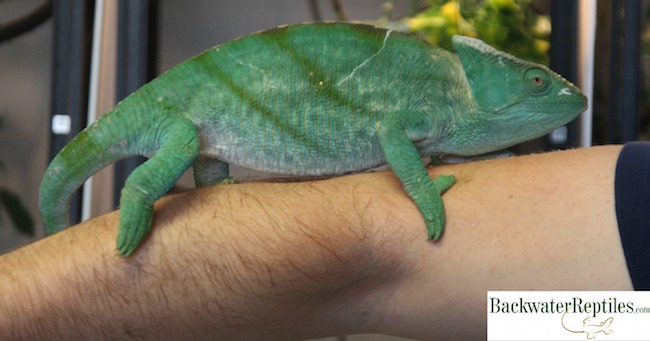
Variable in color, males have ridges running from the side of their eyes down to their noses which form two blunt horns. Females don’t have horns, but do have small head crests and often times nose “bumps” on the tips of their noses.
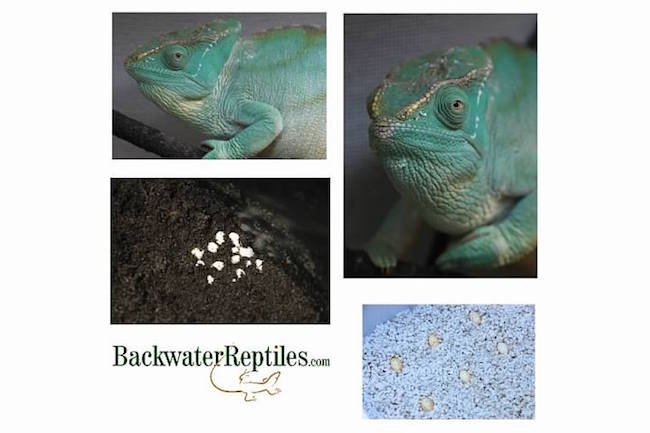
Parson’s are much less common within the pet reptile market, due to more strict regulations regarding their export, and the small number of captive breedings. Captive-bred animals are particularly valuable due to their rarity and lack of parasites. That’s why we were super excited to have our very own clutch of 68 Yellow-Lipped Parson’s eggs laid this year at Backwater Reptiles! If all goes well, we should have some babies born in 14-16 months. Fingers crossed.
If any of these chameleons interests you, we currently have all of these large chameleon species for sale.

